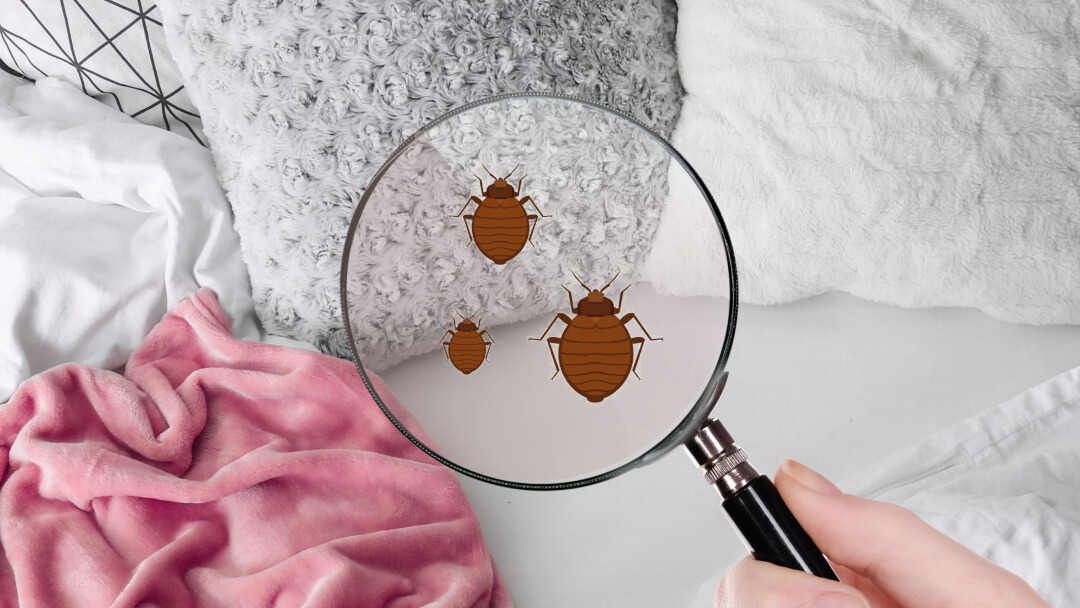The Scientific Research of Pest Control: Recognizing the Biology of Common Home Vermin
In the realm of bug control, a profound understanding of the biological intricacies of typical house parasites acts as the cornerstone of reliable administration methods. By delving into the nuanced life process, actions patterns, and reproduction techniques of these undesirable burglars, we uncover a wealth of understanding that can substantially influence our capability to regulate their populations. From the careful routines of small insects to the complex mating routines of larger pests, the insights obtained from studying their biology offer a vital foundation for establishing targeted and sustainable services. Join us as we untangle the clinical supports of pest control and explore the fascinating globe that exists within our homes (philly philadelphia bed bug exterminator).
Significance of Bug Biology
The understanding of bug biology is crucial for efficient pest control strategies in household setups. By diving right into the biology of common house bugs, individuals can get important insights right into their habits, life cycles, and habitats. This understanding is crucial for establishing targeted and sustainable parasite management approaches that lessen using dangerous chemicals and decrease environmental impact.
Pest biology includes various factors that influence pest invasions, including reproductive prices, favored food resources, and survival mechanisms. Comprehending the breeding patterns of parasites such as cockroaches or insects can assist house owners implement precautionary actions to disrupt their life cycles and minimize populaces. In a similar way, knowing the foraging behaviors of ants or rats can aid in finding and removing their accessibility factors to food resources within a house.

Life Cycles of Usual Parasites
Understanding the life process of typical bugs is vital for implementing efficient bug control procedures in property environments. The life cycle of an insect refers to the stages it undergoes from birth to the adult years and includes egg, larva, pupa, and grown-up stages. Recognizing these stages aids in determining one of the most weak spots in the parasite's life cycle for targeted control approaches.
For instance, typical house bugs like roaches have an insufficient transformation, proceeding from egg to nymph to adult. In comparison, insects like mosquitoes undergo a full transformation with egg, larva, pupa, and adult phases.
Habits Patterns of Family Pest
A thorough evaluation of home insects discloses complex habits patterns that play a critical role in recognizing pest control methods. Home pests show various habits patterns that add to their survival and ability to flourish in human environments. Recognizing these patterns is crucial for reliable pest monitoring.
One usual behavior amongst household pests is their destination to food resources. Pests such as ants, cockroaches, and kitchen parasites are attracted to food deposits, spills, and crumbs. By identifying and eliminating these food sources, homeowners can original site interrupt the bugs' foraging patterns and minimize problems.

Additionally, several household bugs show social actions, living in swarms or groups. Recognizing the social characteristics of pests like termites or ants is crucial for properly getting rid of whole colonies instead of simply private pests. By comprehending the habits patterns of home pests, pest control specialists can develop targeted and efficient techniques to handle invasions successfully.
Reproduction Approaches in Bugs
Reproduction in pests entails detailed biological mechanisms that drive population growth and invasion prices. Parasites have progressed numerous methods to guarantee the extension of their varieties and the effective colonization of brand-new environments. One typical technique is fast reproduction, where parasites have short gestation periods and create huge numbers of children. This method allows them to quickly develop flourishing populaces in beneficial conditions. Furthermore, some parasites exhibit intricate go to website mating behaviors, such as pheromone communication and courtship rituals, to guarantee effective reproduction.
One more critical element of pest recreation is the growth of resistance to regulate procedures. Insects can adjust to chemicals and various other eradication methods through devices like hereditary mutations and behavioral modifications. This ability to evolve promptly poses a significant obstacle for parasite control initiatives, calling for continuous development in administration approaches.

Impact of Biology on Insect Control
The biological attributes of parasites play an important duty fit the effectiveness of insect control approaches. Comprehending the biology of usual household bugs is necessary for establishing effective parasite administration methods (philly pest control philadelphia bed bugs). Factors wasp such as the life-span of a bug, its reproductive rate, preferred environments, and feeding habits all affect the option of control procedures
As an example, bugs with quick reproductive prices, such as cockroaches or certain species of ants, might need much more sustained and hostile control initiatives to avoid population spikes. Similarly, insects that have actually created resistance to specific chemicals will certainly demand making use of alternate control approaches to properly manage infestations.
Furthermore, the biology of insects also impacts the timing and frequency of control applications. Some parasites are much more energetic throughout certain times of the year or under specific environmental conditions, calling for targeted interventions during these periods to accomplish optimum outcomes.
Conclusion
Finally, recognizing the biology of typical family insects is crucial in efficient parasite control. By recognizing their life process, habits patterns, and recreation techniques, we can establish targeted and reliable methods to take care of and remove these parasites. By thinking about the organic elements of insects, we can implement a lot more long-lasting and sustainable solutions that minimize the effect of pests on our homes and settings.
In the world of insect control, an extensive understanding of the organic complexities of typical home bugs offers as the keystone of efficient management techniques.The understanding of parasite biology is important for reliable bug control approaches in household setups.Comprehending the life cycles of typical pests is vital for implementing reliable parasite control actions in household settings.The organic characteristics of bugs play a critical function in shaping the effectiveness of parasite control methods.In final thought, understanding the biology of usual house bugs is vital in effective pest control.